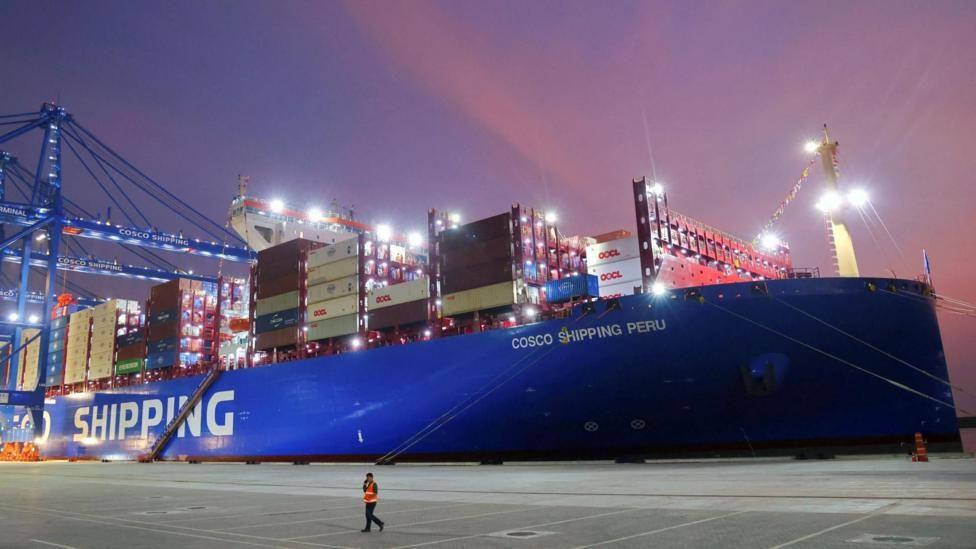Unraveling the Silk Road: Latin America’s Role in China’s Ambitious Trade Pact
The Silk Road, a term that evokes images of ancient trade caravans traversing vast deserts and mountains, has evolved into a modern metaphor for global commerce and connectivity. This historical trade route, which facilitated cultural, economic, and technological exchanges between East and West, has found a new incarnation in China’s Belt and Road Initiative (BRI). The current landscape of this initiative includes several Latin American nations, showcasing the region’s growing significance in China’s ambitious trade pact. However, recent developments, particularly Panama’s decision not to renew its participation, have sparked discussions about the economic repercussions and strategic shifts within this evolving trade initiative.
The Historical Significance of the Silk Road
The original Silk Road, established during the Han Dynasty around 130 BCE, was not a single road but a network of trade routes connecting China to the Mediterranean, the Middle East, and beyond. It was named for the lucrative silk that was transported along these routes, but the trade encompassed a wide array of goods including spices, textiles, precious metals, and even ideas. The Silk Road played a crucial role in shaping the civilizations it connected, fostering cultural exchanges, and facilitating the spread of religions, technologies, and innovations.
As the world moved into the modern era, the spirit of the Silk Road was somewhat lost amidst geopolitical tensions and shifting trade patterns. However, in recent years, the concept has resurfaced with China’s Belt and Road Initiative, launched in 2013 by President Xi Jinping. This modern Silk Road aims to enhance global trade and stimulate economic growth across Asia and beyond, through infrastructure investments and trade agreements.
Latin America’s Involvement in the Modern Silk Road
Latin America has emerged as a focal point in China’s BRI, with several countries signing agreements to enhance trade and investment partnerships. This shift is driven by a variety of factors:
- Economic Opportunities: China represents a vast market for Latin American exports, particularly in commodities such as soybeans, copper, and lithium.
- Infrastructure Development: Many Latin American nations are in desperate need of infrastructure improvements, and Chinese investments can provide much-needed financial resources.
- Political Alignment: Some countries in the region view cooperation with China as a counterbalance to U.S. influence in Latin America.
Countries like Argentina, Brazil, and Chile have engaged actively with China, signing trade agreements and participating in forums to strengthen economic ties. The potential for growth in sectors such as agriculture, mining, and renewable energy is immense, positioning Latin America as a key player in this new trading landscape.
Panama’s Decision: A Strategic Shift
In a surprising turn of events, Panama recently announced its decision not to renew its participation in China’s BRI, a move that has raised eyebrows and generated speculation about the implications for the region. Panama’s strategic geographical position, home to the Panama Canal, makes it a vital hub for global trade. Its decision not to continue with the BRI could have several repercussions:
- Economic Impact: The cessation of BRI participation may limit investment opportunities and infrastructure development in Panama, which could hinder economic growth.
- Diplomatic Ramifications: This decision may signal a shift in Panama’s foreign policy, potentially aligning it closer to traditional partners such as the United States.
- Regional Influence: Other Latin American countries might reconsider their engagement with China, weighing the benefits against potential political and economic risks.
The Economic Repercussions of Panama’s Withdrawal
Panama’s decision not to renew its agreement with China could have significant economic implications, not only for the country itself but also for the broader Latin American landscape. The BRI has been a means for countries to secure funding for infrastructure projects that are crucial for economic development. Without this funding, Panama may face delays in key projects, which could stifle economic growth.
Furthermore, as China seeks to expand its influence in Latin America, Panama’s withdrawal might be viewed as a setback, prompting other nations to reassess their participation in the BRI. This could lead to a potential realignment of trade relationships, with countries looking to strengthen ties with the U.S. or other global economic powers.
Strategic Shifts in Trade Relations
As the BRI continues to evolve, the dynamics of trade relations between Latin America and China are also shifting. The withdrawal of Panama could encourage a more cautious approach among Latin American nations regarding their engagement with China. Countries may begin to scrutinize the terms of their agreements more closely, ensuring that they do not jeopardize their sovereignty or economic independence.
Moreover, this situation may open doors for increased dialogue with other nations. The European Union, for instance, has been seeking to strengthen its trade relations with Latin America, and this might present an opportunity for countries in the region to diversify their economic partnerships.
Conclusion: A New Chapter for the Silk Road
The Silk Road’s legacy as a conduit for trade and cultural exchange continues to resonate in today’s global economy. As China’s Belt and Road Initiative unfolds, Latin America finds itself at a crossroads, with significant opportunities and challenges ahead. Panama’s recent decision not to renew its participation in the BRI highlights the complexities of international trade agreements and the delicate balance nations must strike between economic benefits and political sovereignty.
As other Latin American countries navigate this landscape, they will need to consider their strategic interests carefully, weighing the benefits of Chinese investment against the potential for increased dependence on a single economic partner. The future of trade in the region may well depend on the ability of these nations to foster diverse and resilient economic relationships while remaining true to their national interests.
In unraveling the modern Silk Road, Latin America’s role is poised to be both significant and transformative, shaping not only its own economic future but also the broader dynamics of global trade in the 21st century.
See more CCTV News Daily



